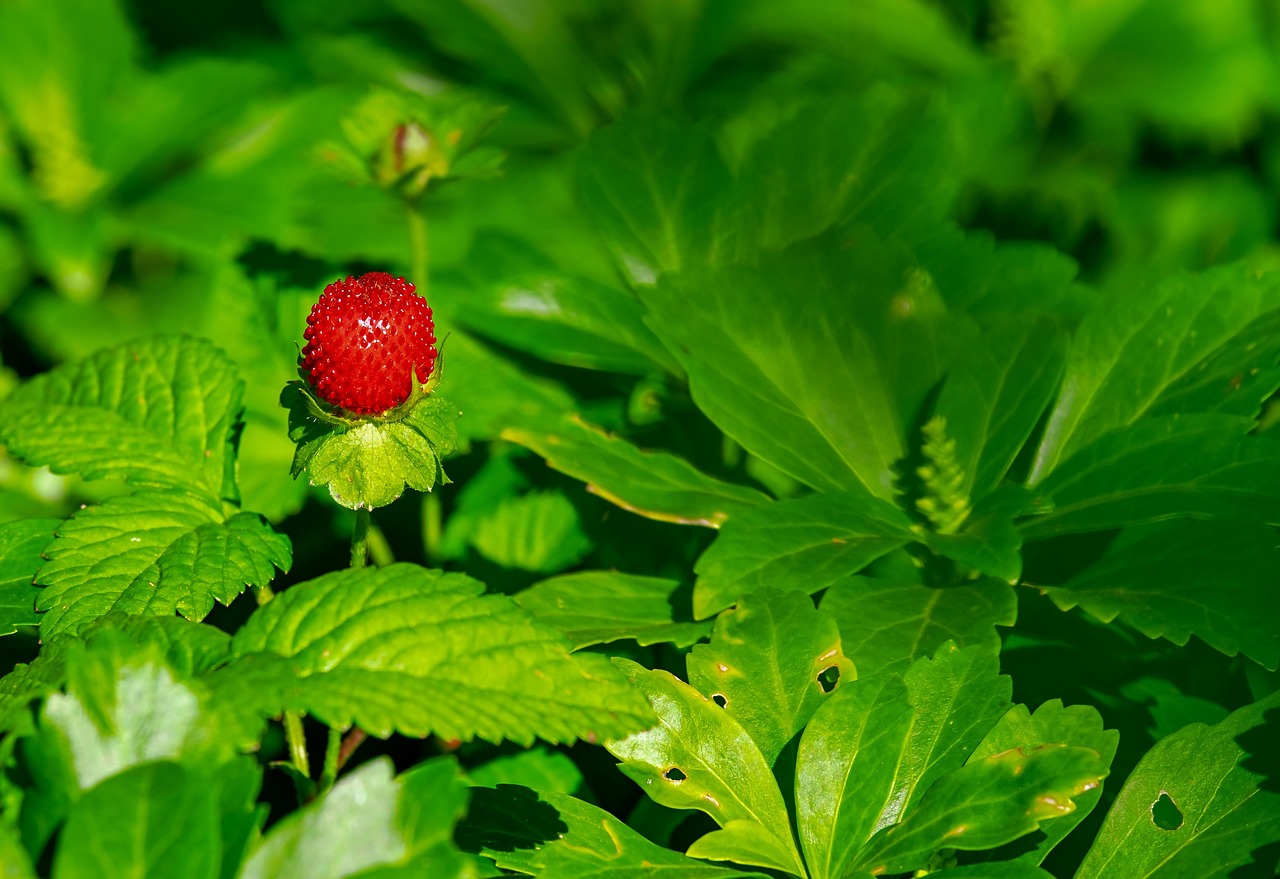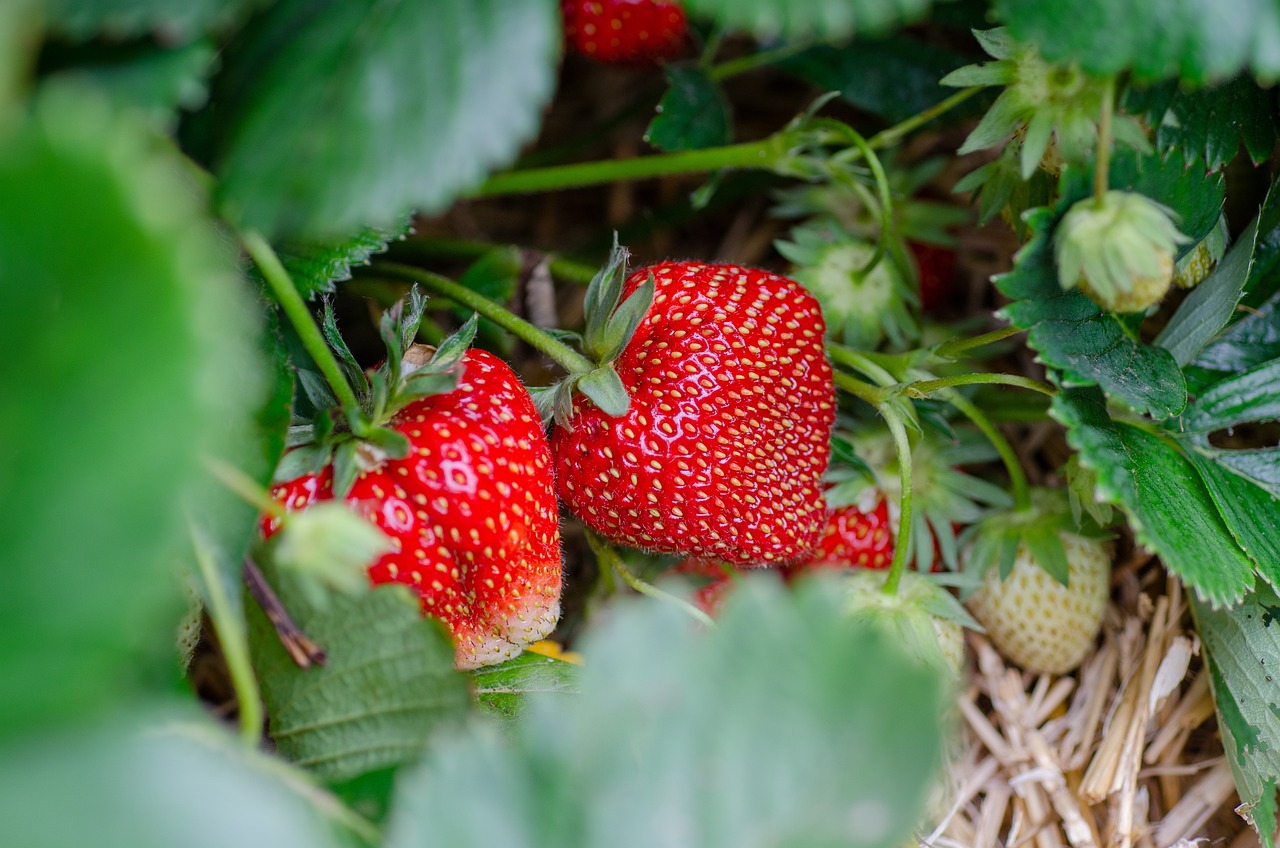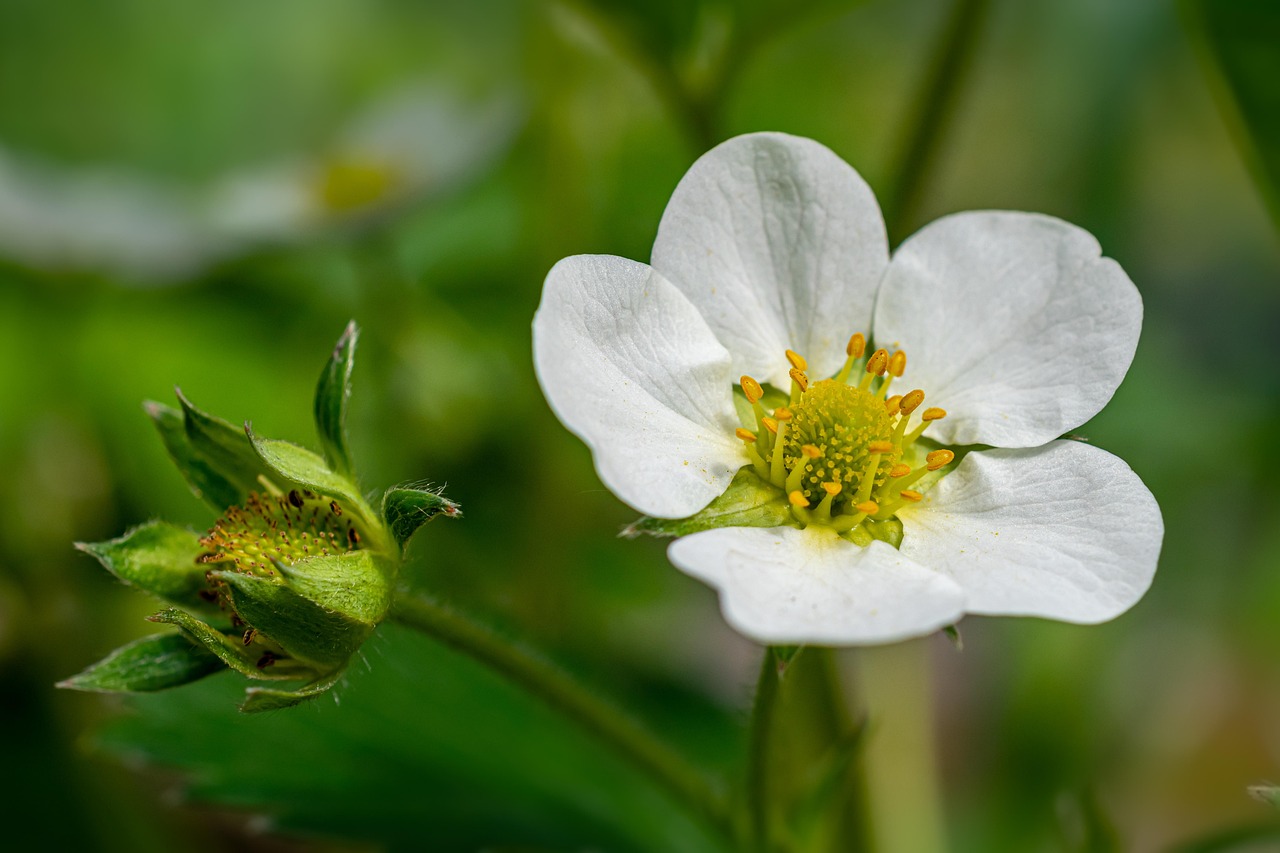Strawberry plant leaves can turn brown due to several factors, including environmental stress, pests, diseases, and nutrient deficiencies. Treatment options vary depending on the cause, ranging from adjusting watering practices and improving soil conditions to applying appropriate pest control measures and fertilizers.
Strawberries are a beloved fruit, appreciated for their sweet flavor and vibrant color. However, like all plants, they can face challenges that affect their health. One common issue that strawberry growers encounter is the browning of leaves. This condition can signal underlying problems that need to be addressed promptly to ensure the plant’s survival and productivity.
Understanding the causes of brown leaves is essential for any gardener or farmer. By diagnosing the issue early, you can take steps to mitigate damage and promote healthier growth. Factors contributing to browning leaves often include improper watering, exposure to extreme temperatures, pest infestations, and diseases. Each of these factors requires a different approach for effective treatment.
| Cause | Symptoms | Treatment |
|---|---|---|
| Overwatering | Yellowing leaves leading to browning tips | Reduce watering frequency and improve drainage |
| Underwatering | Crispy, brown edges on leaves | Water regularly and mulch to retain moisture |
| Pest Infestation | Visible insects or damage on leaves | Use insecticidal soap or neem oil |
| Fungal Diseases | Brown spots with a yellow halo | Apply fungicides and improve air circulation |
| Nutrient Deficiency | Stunted growth and discoloration | Fertilize with balanced plant food |
Common Causes of Brown Strawberry Leaves

Several reasons can lead to the browning of strawberry leaves. Recognizing these causes is crucial for effective treatment. Below are some of the most common culprits:
- Environmental Stress: Extreme heat or cold can stress strawberry plants, leading to leaf discoloration.
- Pests: Insects like aphids and spider mites can suck sap from the leaves, causing them to turn brown.
- Diseases: Fungal infections such as gray mold or leaf spot can cause significant damage to strawberry foliage.
- Nutrient Deficiencies: Lack of essential nutrients such as nitrogen, potassium, or magnesium can manifest as browning leaves.
Each of these causes may require a unique management strategy. For instance, if pests are detected, it is vital to identify the specific insect and choose an appropriate pesticide. Conversely, if the issue is related to watering practices, adjustments need to be made immediately.
In the following sections, we will delve deeper into each of these causes, providing detailed information on identification and effective treatments. Understanding these aspects will empower strawberry growers to take proactive measures in maintaining their plants’ health.
Environmental Stress and Its Impact on Strawberry Leaves
Environmental stress is a significant factor that can lead to the browning of strawberry plant leaves. Conditions such as extreme temperatures, poor soil quality, and inadequate sunlight can all contribute to this problem. Identifying these environmental stressors is essential for restoring the health of your strawberry plants.
Temperature Extremes
Strawberry plants thrive in moderate temperatures. When exposed to extreme heat or cold, they can experience physiological stress. High temperatures can result in leaf scorch, where the edges of the leaves turn brown and crispy. On the other hand, frost can cause the leaves to become blackened or mushy, leading to further complications.
To mitigate temperature-related issues:
- Provide Shade: During extreme heat, use shade cloths to protect your plants from direct sunlight.
- Mulching: Apply organic mulch around the base of the plants to retain moisture and regulate soil temperature.
- Frost Protection: Use row covers during cold nights to shield plants from frost damage.
Soil Quality and Drainage
Poor soil quality can also lead to browning leaves in strawberry plants. Soil that lacks nutrients or has poor drainage can create a hostile environment for roots. This can result in nutrient deficiencies and root rot, both of which manifest as discolored leaves.
To improve soil quality and drainage:
- Soil Testing: Conduct a soil test to determine nutrient levels and pH balance.
- Amendments: Add organic matter such as compost or well-rotted manure to enrich the soil.
- Improve Drainage: Ensure that your planting area has good drainage. Raised beds can help manage water levels effectively.
Pests That Cause Leaf Browning
Pests are another common reason for the browning of strawberry leaves. Insects like aphids, spider mites, and whiteflies can sap nutrients from the leaves, leading to discoloration and wilting. Recognizing the signs of pest infestation early is crucial for effective management.
Aphids
Aphids are small, soft-bodied insects that cluster on the undersides of leaves. They feed by sucking sap, which weakens the plant and causes leaves to curl and turn brown. Additionally, they can transmit diseases that further stress the plants.
To control aphids:
- Natural Predators: Introduce ladybugs or lacewings, which feed on aphids.
- Insecticidal Soap: Apply insecticidal soap sprays directly onto affected areas.
Spider Mites
Spider mites are tiny arachnids that thrive in hot, dry conditions. They cause leaf browning by puncturing leaf tissues and sucking out fluids. Affected leaves may develop tiny yellow or brown spots.
To manage spider mites:
- Increase Humidity: Regularly mist plants or use a humidifier to create a less favorable environment for mites.
- Pesticides: Use miticides specifically formulated to target spider mites if infestations become severe.
Diseases Affecting Strawberry Plants
Disease is another critical factor that can lead to brown leaves on strawberry plants. Fungal infections are particularly notorious for causing damage. Understanding common diseases can help in their early identification.
Gray Mold (Botrytis cinerea)
This fungal disease thrives in cool, damp conditions and typically affects ripe fruit but can also cause leaf browning. Leaves may develop a grayish mold on their surfaces.

Treatment options include:
- Good Airflow: Space plants adequately to ensure air circulation.
- Remove Affected Parts: Prune away infected leaves and fruit promptly.
- Fungicides: Apply fungicides specifically designed for gray mold control as a preventive measure.
Leaf Spot Diseases
Leaf spot diseases are characterized by circular brown spots on leaves, often surrounded by yellow halos. These spots can eventually lead to leaf drop if not managed properly.
Management strategies include:
- Cultural Practices: Rotate crops and avoid overhead watering to minimize leaf wetness.
- Pesticide Application: Use fungicides recommended for leaf spot diseases to protect healthy foliage.
By understanding how environmental stressors and pests affect strawberry plants, growers can take proactive steps to ensure healthy growth and vibrant foliage. Keeping an eye on these factors will help maintain the overall health of your strawberry garden.
Nutrient Deficiencies and Their Effects on Strawberry Leaves

Nutrient deficiencies can significantly impact the health of strawberry plants, leading to browning leaves and reduced fruit yield. Essential nutrients play crucial roles in various plant functions, including photosynthesis, growth, and disease resistance. When these nutrients are deficient, symptoms can manifest in the foliage.
Key Nutrients for Strawberry Plants
Strawberries require a balanced supply of nutrients to thrive. The most important nutrients include:
- Nitrogen (N): Crucial for leaf growth and overall plant vigor. A lack of nitrogen can result in pale green leaves that turn brown at the edges.
- Potassium (K): Important for water regulation and fruit quality. Potassium deficiency may lead to browning leaf tips and poor fruit development.
- Magnesium (Mg): Essential for chlorophyll production. A deficiency often causes interveinal chlorosis, where leaf veins remain green while the spaces between turn yellow or brown.
Identifying Nutrient Deficiencies
Recognizing the specific nutrient deficiency is vital for implementing appropriate treatments. Here are some signs to watch for:
- Nitrogen Deficiency: Yellowing of older leaves, with browning occurring at the tips.
- Potassium Deficiency: Brown, crispy edges on leaves, particularly older foliage.
- Magnesium Deficiency: Yellowing between the leaf veins while veins remain green, leading to brown spots.
Treating Nutrient Deficiencies
Addressing nutrient deficiencies typically involves adjusting fertilization practices. Here are several effective strategies:
- Soil Testing: Conduct a soil test to identify nutrient levels. This will help determine which nutrients need to be added.
- Balanced Fertilizers: Use a balanced fertilizer that provides essential nutrients. Look for fertilizers with a ratio tailored for strawberries, such as 10-10-10 or similar formulations.
- Organic Amendments: Incorporate organic materials like compost or well-rotted manure into the soil to improve nutrient content naturally.
- Foliar Feeding: For quick nutrient absorption, consider using liquid fertilizers applied directly to the leaves.
Watering Practices and Their Influence on Leaf Health
Watering practices are paramount when it comes to maintaining healthy strawberry plants. Both overwatering and underwatering can lead to browning leaves and overall plant decline. Understanding proper watering techniques can prevent these issues.
Overwatering
Overwatering is a common mistake among gardeners. Excess moisture can lead to root rot, which impairs the plant’s ability to absorb nutrients and water. Symptoms of overwatering include yellowing leaves that eventually turn brown and fall off.
To avoid overwatering:
- Check Soil Moisture: Before watering, check the soil moisture by sticking your finger about an inch deep into the soil. Water only if it feels dry.
- Use Well-Drained Soil: Ensure that the soil has good drainage properties to prevent standing water around the roots.
- Avoid Watering at Night: Watering in the morning allows excess moisture to evaporate during the day, reducing the risk of root rot.
Underwatering
Conversely, underwatering can lead to dehydration, resulting in crispy brown leaf edges. This stress can also stunt growth and reduce fruit production.
To prevent underwatering:
- Consistent Schedule: Establish a regular watering schedule based on weather conditions. Strawberry plants typically need about 1 inch of water per week.
- Mulching: Apply mulch around plants to retain moisture and regulate soil temperature.
- Irrigation Systems: Consider using drip irrigation to provide consistent moisture directly to the root zone without soaking the leaves.
By understanding nutrient needs and proper watering techniques, strawberry growers can greatly enhance plant health. Maintaining a balanced environment will help keep leaves vibrant and reduce the risk of browning. Additionally, monitoring for pests and diseases will further support overall plant vitality.
Maintaining Healthy Strawberry Plants

To successfully grow strawberries, it is essential to be proactive about maintaining plant health. Regular monitoring of environmental conditions, soil quality, and plant health can help prevent issues before they escalate. Here are some additional practices to consider:
Regular Inspection
Frequent checks on your strawberry plants can help identify problems early. Look for signs of pests, diseases, or nutrient deficiencies. Early detection allows for quicker intervention and can significantly improve outcomes.
- Visual Checks: Inspect leaves regularly for discoloration, spots, or pests.
- Soil Condition: Assess moisture levels and soil texture to ensure optimal growing conditions.
Proper Spacing and Airflow
Good airflow around strawberry plants is crucial for preventing diseases. Crowded plants can trap humidity, creating an environment conducive to fungal infections. When planting strawberries, ensure proper spacing between plants to allow air to circulate freely.
- Recommended Spacing: Space plants approximately 12-18 inches apart in rows to maximize airflow.
- Row Orientation: Plant rows in a north-south direction to optimize sunlight exposure and air circulation.
Seasonal Care
Strawberry plants require different care throughout the growing season. In spring, focus on fertilization and pest management as new growth begins. In summer, ensure adequate watering during dry spells. In fall, prepare plants for dormancy by removing debris and applying mulch to protect roots from cold temperatures.
- Spring: Fertilize after the last frost and monitor for pests as growth accelerates.
- Summer: Maintain consistent watering and watch for heat stress signs.
- Fall: Clean up the garden and mulch to insulate plants during winter.
Final Thoughts
Understanding the causes of brown leaves on strawberry plants is vital for any successful gardener. By addressing environmental stressors, nutrient deficiencies, pests, and diseases, you can maintain healthy plants that yield abundant fruit. Regular monitoring and appropriate cultural practices will help mitigate risks and promote robust growth.
Remember that strawberry cultivation is a rewarding endeavor that comes with its challenges. Patience and diligence in caring for your plants will lead to flourishing strawberries. By implementing the knowledge gained from this article, you can create an optimal growing environment that supports the health and productivity of your strawberry plants.
Your journey with strawberries can be filled with delicious rewards if you remain vigilant and attentive to their needs. Happy gardening!
